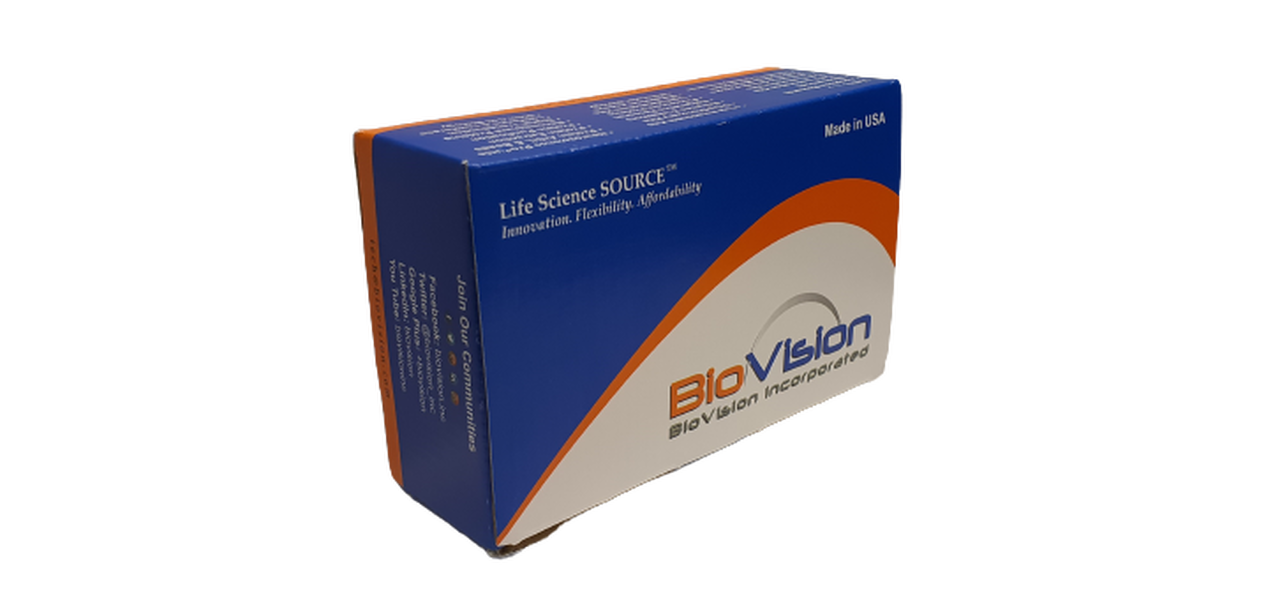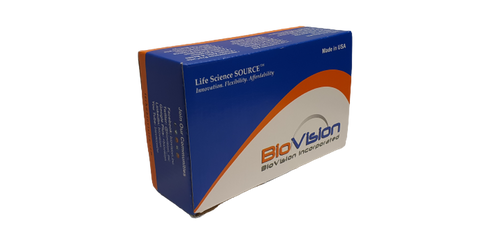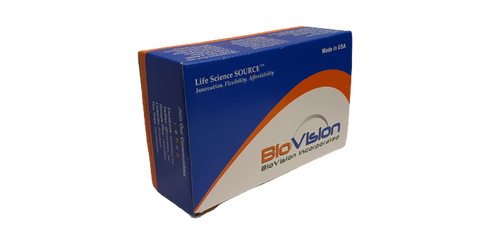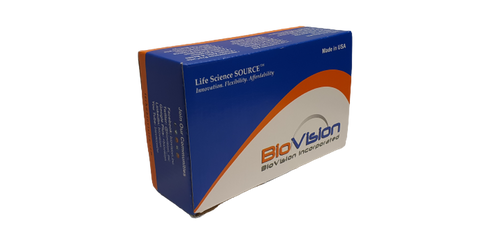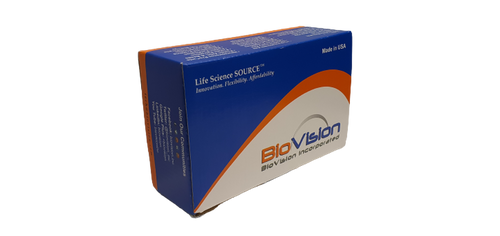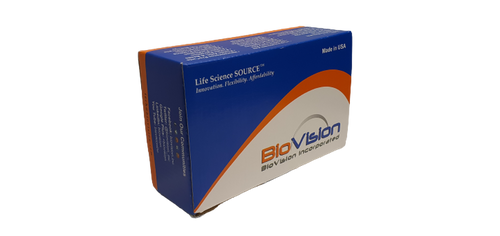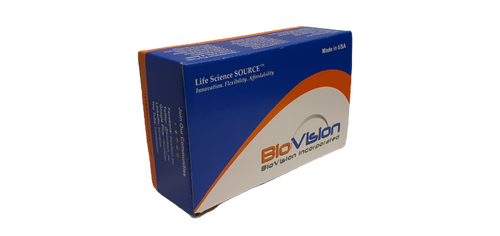Product Description
Biovision | K2013 | cAMP Phosphodiesterase Activity Assay Kit (Fluorometric) DataSheet
Cyclic adenosine-3’,5’-monophosphate (cyclic AMP or cAMP) is a vital second messenger molecule in eukaryotes as well as a relevant signaling effector in bacteria. Intracellular cAMP-mediated signaling cascades control many biological pathways such as glucose and lipid metabolism via activation of protein kinase A and cyclic nucleotide gated ion channels. Intracellular cAMP is synthesized from ATP by the enzyme adenylyl cyclase and is inactivated by hydrolytic cyclic-AMP phosphodiesterase enzymes (cPDEs; EC 3.1.4.53). Inhibition of cPDEs has been shown to impact many biological pathways including cognition, neuronal signaling, inflammation and vascular smooth muscle contractility. Eleven superfamilies of PDEs with varying selectivity for cAMP or other cyclic nucleotides have been identified in mammals. The predominant phosphodiesterase isoforms involved in the degradation of cAMP are phosphodiesterase 4 (PDE4) family members. There are many unique isoforms of the enzyme, expressed either as products of different genes or through alternative splicing, and their expression levels are cell-type dependent. BioVision’s cAMP Phosphodiesterase Activity Assay Kit provides a rapid, sensitive and straightforward way to measure cPDE activity in various sample types. In this assay, AMP produced by cPDE activity is metabolized by the enzyme mix, developer mix and converter mix to generate an intermediate compound, which reacts with a probe, yielding a fluorescent signal that can be measured at Ex/Em = 535/587 nm. This assay can detect cPDE activity as low as 0.1 µU per well.
Alternate Name : cAMP Phosphodiesterase, cAMP Phosphodiesterase Activity Assay Kit, cAMP Phosphodiesterase Activity Assay, Cyclic adenosine-3’,5’-monophosphate, cAMP Phosphodiesterase Activity, cyclic AMP, cAMP Phosphodiesterase Activity Assay (Fluorometric), cAMP, cAMP Phosphodiesterase Activity Kit, cAMP Phosphodiesterase Activity Kit (Fluorometric), cAMP Phosphodiesterase Activity Assay Kit (Fluorometric)
Tag Line : to measure cPDE activity in various sample types
Summary : Cyclic adenosine-3’,5’-monophosphate (cyclic AMP or cAMP) is a vital second messenger molecule in eukaryotes as well as a relevant signaling effector in bacteria. Intracellular cAMP-mediated signaling cascades control many biological pathways such as glucose and lipid metabolism via activation of protein kinase A and cyclic nucleotide gated ion channels. Intracellular cAMP is synthesized from ATP by the enzyme adenylyl cyclase and is inactivated by hydrolytic cyclic-AMP phosphodiesterase enzymes (cPDEs; EC 3.1.4.53). Inhibition of cPDEs has been shown to impact many biological pathways including cognition, neuronal signaling, inflammation and vascular smooth muscle contractility. Eleven superfamilies of PDEs with varying selectivity for cAMP or other cyclic nucleotides have been identified in mammals. The predominant phosphodiesterase isoforms involved in the degradation of cAMP are phosphodiesterase 4 (PDE4) family members. There are many unique isoforms of the enzyme, expressed either as products of different genes or through alternative splicing, and their expression levels are cell-type dependent. BioVision’s cAMP Phosphodiesterase Activity Assay Kit provides a rapid, sensitive and straightforward way to measure cPDE activity in various sample types. In this assay, AMP produced by cPDE activity is metabolized by the enzyme mix, developer mix and converter mix to generate an intermediate compound, which reacts with a probe, yielding a fluorescent signal that can be measured at Ex/Em = 535/587 nm. This assay can detect cPDE activity as low as 0.1 µU per well.
Detection Method : Fluorescence (Ex/Em = 535/587 nm)
Sample Type : Adherent or suspension cultured cells, Animal tissues: liver, lung, intestine, etc., Purified enzyme preparations
Species Reactivity : All
Applications : Measurement of Cyclic-AMP Phosphodiesterase activity in various tissues or cells
Features and Benefits : Sensitive, Rapid, Straightforward way to measure cPDE activity in various sample types
 Euro
Euro
 USD
USD
 British Pound
British Pound
 NULL
NULL

